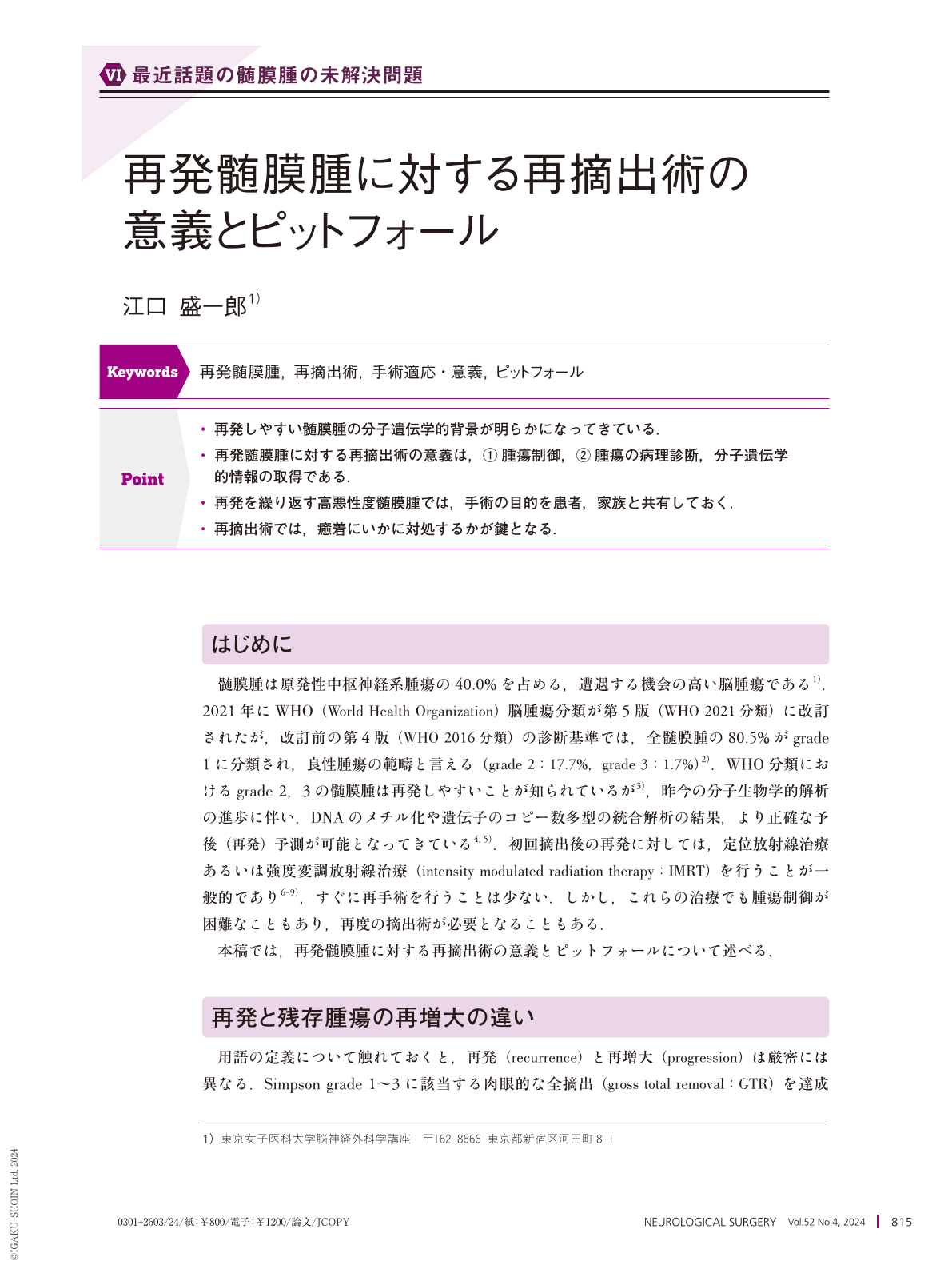Japanese
English
- 有料閲覧
- Abstract 文献概要
- 1ページ目 Look Inside
- 参考文献 Reference
Point
・再発しやすい髄膜腫の分子遺伝学的背景が明らかになってきている.
・再発髄膜腫に対する再摘出術の意義は,① 腫瘍制御,② 腫瘍の病理診断,分子遺伝学的情報の取得である.
・再発を繰り返す高悪性度髄膜腫では,手術の目的を患者,家族と共有しておく.
・再摘出術では,癒着にいかに対処するかが鍵となる.
Malignant forms of meningioma, such as atypical and anaplastic meningiomas, commonly relapse. Recently, there have been many reports elucidating the molecular biological mechanisms underlying meningioma recurrence. Tumors with loss of CDKN(cyclin dependent kinase)2A and 2B or lack of the tri-methylation of lysine 27 on histone H3 protein have a particularly high recurrence rate. In general, primary treatment for recurrent meningiomas comprises stereotactic radiosurgery(SRS)or stereotactic radiotherapy(SRT). However, re-operation is recommended for SRS-, SRT-refractory tumors. One of the benefits of reoperation is that it allows tumor control while decompressing the normal tissue, and changing the tumor microenvironment. Another is that it facilitates the acquisition of pathological and molecular genetic information, which can enable clinicians to recommend precision medicine. However, during reoperation, it is often difficult to detach the tumor from the surrounding brain tissue and cranial nerves because of severe adhesion. In cases of malignant meningiomas with multiple relapses, it is important to share the purpose and goal of the surgery with the patients and their families. In other words, which is being prioritized more, a high resection rate or functional outcomes? Furthermore, salvage surgery should also be a consideration.

Copyright © 2024, Igaku-Shoin Ltd. All rights reserved.


